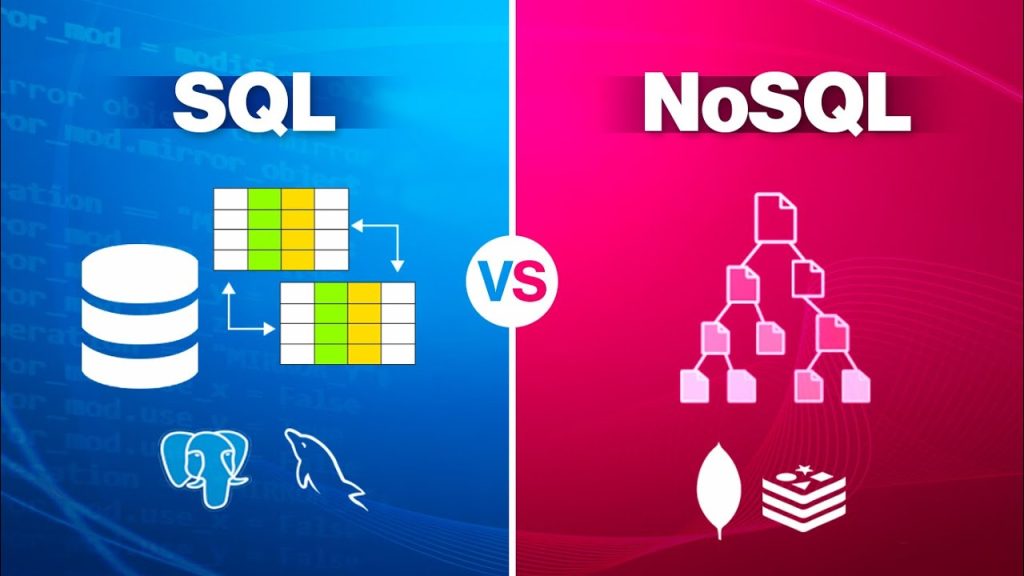In the world of data management, the choice between SQL and NoSQL databases is a critical decision that can significantly impact the performance, scalability, and flexibility of your applications. With the rapid growth of data and the diverse needs of modern applications, understanding the differences between these two types of databases and knowing when to use each is essential.

Understanding SQL and NoSQL Databases
SQL (Structured Query Language) Databases are relational databases that organize data into tables with predefined schemas. Each table contains rows and columns, where each column represents a specific data attribute, and each row represents a unique record. SQL databases use a structured query language to define, manipulate, and query data, making them highly suitable for applications requiring complex queries and transactions.
NoSQL (Not Only SQL) Databases are non-relational databases that provide a more flexible approach to data storage and management. They do not require a fixed schema, allowing for the storage of unstructured or semi-structured data. NoSQL databases are designed to scale horizontally, handling large volumes of data and high levels of user traffic with ease. They come in various types, including document, key-value, column-family, and graph databases, each tailored to specific use cases.
Key Differences Between SQL and NoSQL
- Schema Flexibility
- SQL: SQL is perfect for structured data and applications where data consistency is essential since it requires a predetermined schema. Schema modifications can be difficult and time-consuming.
- NoSQL: Provides dynamic schema design, making it simple to add new kinds and fields. Applications with changing data requirements benefit from this flexibility.
- Scalability
- SQL: Generally, it scales vertically by boosting a single server’s capacity. Although horizontal scalability is a feature of several SQL databases, putting it into practice can be difficult.
- NoSQL: Designed for data distribution over several servers, allowing for horizontal scaling. Because of this, NoSQL databases are appropriate for high-traffic and large-database applications.
- Data Integrity and Transactions
- SQL: Excellent at maintaining data consistency and integrity by adhering to ACID (Atomicity, Consistency, Isolation, Durability) standards. Perfect for applications like banking systems that need to do intricate transactions.
- NoSQL: Availability and partition tolerance are frequently given precedence over tight consistency (CAP theorem). For applications where data can withstand brief delays in consistency, eventual consistency—which is provided by some NoSQL databases—might be acceptable.
- Query Complexity
- SQL: Excel used in intricate joins, aggregations, and hierarchical query structures. Complex data analysis is simple to carry out when SQL is used.
- NoSQL: Although certain NoSQL databases can handle sophisticated queries, they are typically not as strong as SQL in this area. For sophisticated data retrieval, NoSQL databases frequently rely on denormalization and application-level logic.
When to Use SQL Databases
SQL databases are a great option if:
- Applications like CRM and enterprise resource planning (ERP) systems demand organized data and sophisticated queries.
- Use cases like inventory management and financial transactions require data consistency and integrity.
- Situations in which the schema is constant and rarely varies.
Popular SQL databases include MySQL, PostgreSQL, SQLite, and Oracle.
When to Use NoSQL Databases
NoSQL databases are suitable for:
- Applications such content management systems, social networking platforms, and Internet of Things apps deal with substantial amounts of unstructured or semi-structured data.
- Situations like large data analytics and real-time applications that call for a high degree of scalability and flexibility.
- Use cases include online gaming and platforms for user-generated content allow for data consistency to be relaxed and schema development to occur often.
Popular NoSQL databases include MongoDB, Cassandra, Redis, and Neo4j.
Conclusion
The particular needs of your application, such as data structure, scalability requirements, and consistency requirements, will determine which SQL or NoSQL database is best. NoSQL databases provide flexibility and scalability for unstructured data and dynamic applications, whereas SQL databases are a dependable option for complex transactions and organized data.
By thoroughly assessing your use case and comprehending the advantages and disadvantages of every database type, you can make an informed choice that best meets your requirements and guarantees your application will run smoothly and scale.
